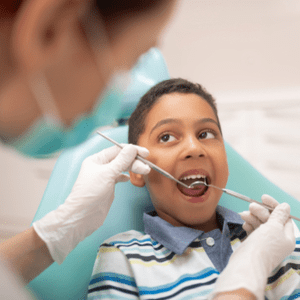
When you have a Health Savings Account (HSA), you’re also eligible to sign up for a Limited Purpose Flexible Spending Account (LPFSA). Having both benefit accounts can save you even more on taxes and cover those necessary healthcare related expenses. A question for many people is “how do you maximize both accounts?” Here are some tips to put both your LPFSA and HSA to good use.
What is a Limited Purpose FSA?
Before we get to the tips, let’s quickly cover what is a Limited Purpose FSA. By law, an LPFSA is available only for people who also have an HSA. The LPFSA provides an extra way to save money on taxes and healthcare. Each calendar year, you can contribute up to the IRS maximum limit in addition to contributing the max amount your HSA.
With an HSA, you can cover any IRS-qualified healthcare expense. These include copays, deductibles, prescriptions, ambulance services, and many other services and products.
However, as the name indicates, a Limited Purpose FSA is limited. The account cannot be used for every eligible healthcare expense. You can only use it for qualified vision and dental care.
LPFSA Eligible Expenses – Dental and Vision
An LPFSA can cover many costs related to eye care, including correction procedures for cataracts, glaucoma, myopia, hyperopia and astigmatism. Keep in mind, some products may require a prescription.
Eye care eligible expenses:
- Eye exams
- Prescription eye glasses, contacts and sunglasses
- Vision correction (LASIK, PRK, etc.)
- Contact lens solution
- Eye wear repair kits
- Eye drops
In addition to eye care, most common dental care can be paid for with an LPFSA, including common dental exams and procedures, such as:
- Dental exams
- Cleaning
- X-rays
- Braces and other orthodontia
- Cavities, fillings, crowns, etc.
People wonder if certain cosmetic procedures (i.e., eye lift or teeth whitening) are eligible expenses. IRS publication 502 states, “Medical expenses are the costs of diagnosis, cure, mitigation, treatment, or prevention of disease, and for the purpose of affecting any part or function of the body.” In other words, most cosmetic procedures do not qualify as an eligible expense.
LPFSA Tips for Account Holders
Think of an LPFSA as a “bonus” benefit when you have an HSA. When you have both an LPFSA and HSA, keep in mind a few simple things to take full advantage of your accounts.
First, if you and your family have a lot of vision and dental expenses, put in as much as you can afford (up to the annual limit) into the LPFSA. Like a healthcare FSA, your LPFSA may let you rollover up to $500 if you don’t use it all by the end of the plan year.
Second, when it’s time for those costly eye and dental exams and procedures, use your LPFSA first. It’s important to remember that your HSA is yours for life. All of the unused money rolls over, so if you don’t spend it, you can build up your account. Since your LPFSA is use-it-or-lose-it (up to $500 if you have rollover), you will want to use up those dollars before dipping into the HSA.
Third, use your benefits card when possible (it’s just like regular debit card) and keep all of your receipts. Not only can you keep track of how much you spend, which will help you estimate for next year, but your benefits administrator could ask you to verify your purchases. If you have a mobile app, that’s also a good way to keep track of what’s in your account.
Smile! With a thoughtful approach to LPFSA/HSA spending, you can stretch your healthcare dollars further!